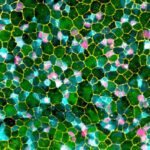Lien vers Pubmed [PMID] – 22284183
Neuron 2012 Jan;73(2):279-91
Regulation of corticotropin-releasing hormone (CRH) activity is critical for the animal’s adaptation to stressful challenges, and its dysregulation is associated with psychiatric disorders in humans. However, the molecular mechanism underlying this transcriptional response to stress is not well understood. Using various stress paradigms in mouse and zebrafish, we show that the hypothalamic transcription factor Orthopedia modulates the expression of CRH as well as the splicing factor Ataxin 2-Binding Protein-1 (A2BP1/Rbfox-1). We further show that the G protein coupled receptor PAC1, which is a known A2BP1/Rbfox-1 splicing target and an important mediator of CRH activity, is alternatively spliced in response to a stressful challenge. The generation of PAC1-hop messenger RNA isoform by alternative splicing is required for termination of CRH transcription, normal activation of the hypothalamic-pituitary-adrenal axis and adaptive anxiety-like behavior. Our study identifies an evolutionarily conserved biochemical pathway that modulates the neuronal adaptation to stress through transcriptional activation and alternative splicing.

